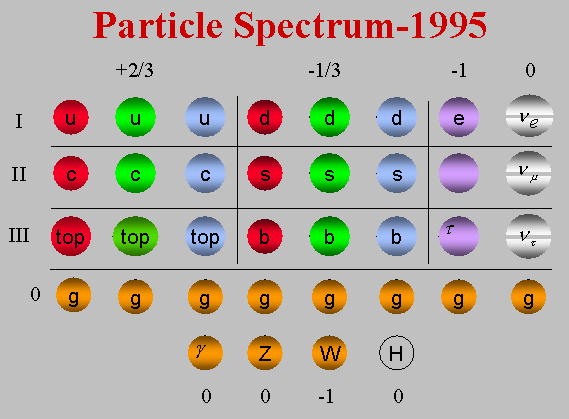“You suddenly realize that you and your colleagues know something that no one else does… and that it is important. You’re lucky if it happens once in a lifetime. I’ve been super-lucky.” -Leon Lederman
It's the holy grail of modern particle physics: discovering the first smoking-gun, direct evidence for physics beyond the Standard Model.
Sure, there are unanswered questions and unsolved puzzles, ranging from dark matter to the hierarchy problem to the strong-CP problem, but there's no experimental result clubbing us over the head that can't be explained with standard particle physics. That is, the physics of the Standard Model in the framework of quantum field theory.
 Image credit: University College London, via http://www.hep.ucl.ac.uk/muons/g-2/.
Image credit: University College London, via http://www.hep.ucl.ac.uk/muons/g-2/.
Or is there? Take a look at the evidence from the muon's magnetic moment, and see what might be the future of physics!
- Log in to post comments


Please calm down on the exclamation points. You're not adding anything to the excitement of the news you post. It's like posting in all-caps - eventually you drive away readers.
Alan,
Ethan's enthusiasm for science is why people actually read this blog, as opposed to the 434,000 other blogs out there. Get the stick out of your ass and lighten up, or just find another website to whine like a bitch on.
Awesome findings! I'm keeping my fingers crossed!
I enjoy Ethan's enthusiasm. Reading one of his posts makes me think all is right with the world.
Just to note that the first, and only, so far, evidence for BSM physics was the discovery that neutrinos oscilations (then they have mass). Cheers.
Ineed, if Ethan were posting in all caps, that would be annoying. But he isn't. I think Alan needs to calm down.
Nice article.
The Standard-Model uncertainty for this 4 sigma effect is almost as large as the experimental error, and has quite a number of parts. I would suggest that an error in this calculation (or in the experimental constants used in making it) is more likely than a failure of the standard model.
@Marshall Eubanks #7: I think you might have missed something, which was *not* clearly spelled out in Ethan's article. The "4.7 sigma" discrepancy is NOT the difference between the experimental result and the SM central value.
It is the uncertainly on the _difference_ between those values, compared to a difference of zero, where that uncertainty is the sum in quadrature (including correlations) between the SM calculation and the experimental result.
Just comparing the experimental result to the SM central value, the discrepancy would be more than 6.6-sigma, but that is not a valid comparison, as you note.
The SM calculation is extremely well controlled, for all of the QED terms. The largest uncertainly comes from the higher order diagrams involving hadrons (quark loops, or pion and rho resonances in low energy EFT). Substantial progress on reducing that contribution is coming from studies of pion and kaon radiative decays.
Would anyone here comment on what you think this may point to that's beyond the Standard Model?
And, do we presently have sufficient computing capacity to take any of these findings and run simulations to scope out their potential effects? If not, then what degree of advance in computer hardware would be needed?
Wow, this is cool, shouldn't this make it to the headlines?
1) Dirac made a post-diction (not a prediction) for the electron's magnetic moment.
2) 5-sigma is not the be-all, end-all of discovery, because
3) do you think you can trust those theoretical errors to be gaussian out to 3 or 4 sigma? That's even assuming the experimental errors are gaussian out that far.
There are many thorny issues with the theoretical calculation here that the white paper tries to address. But you may notice the discrepancy "significance" shifts pretty dramatically just based on which group's calculation you use. The famous "wrong-sign" HLBL mishap and the magic fixing of the tau decays to suddenly get good agreement with e+e- scattering data don't give me a lot of confidence that those quoted errors are all that meaningful, but your mileage may vary. There are many biases that can creep into a complicated calculation such as this, and knowing what the "right" answer is ahead of time surely doesn't help.
Short story long: Even with E989, I doubt we'll have much more of a smoking gun for new physics than we already have. It's interesting, but...